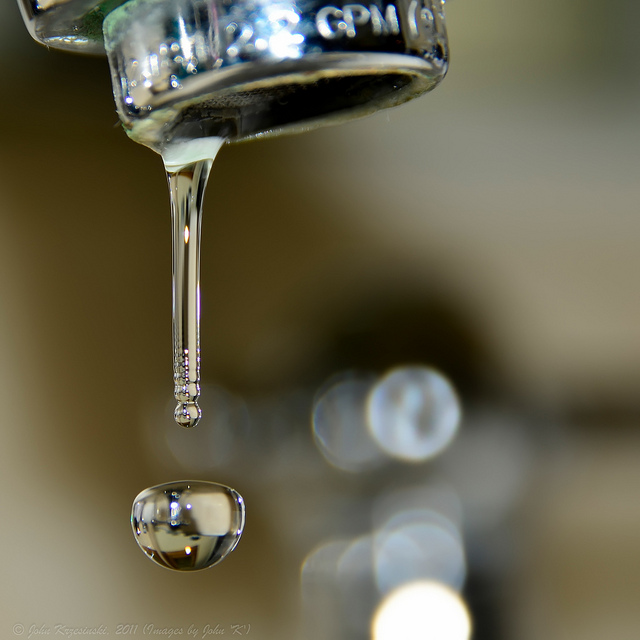Once a year in our office, someone walks through the halls ringing an old-fashioned school bell. We immediately stop what we are doing, crawl under our desks and brace ourselves, and wait. A few moments later, one of our earthquake marshals comes by to tell us that it is safe to leave the building, and we carefully make our way down the stairs to the designated meeting spot. After checking the staff list and verifying that everyone made it out “safely,” our marshals let us return to our work. It wasn’t an earthquake—this time.
Audit, Compliance and Risk Blog
Earthquakes: Are You Ready to “Shake Out” on October 16?
Posted by Allison Campbell on Tue, Oct 14, 2014
Tags: Corporate Governance, Business & Legal, Employer Best Practices, Health & Safety, Environmental risks, Environmental
OSHA: Providing Lockout/Tagout to Protect Workers from Equipment
Posted by Jon Elliott on Wed, Oct 08, 2014
Most Occupational safety and Health Administration (OSHA) electrical safety and machine guarding standards apply to protect employees from electrical and kinetic energy hazards during routine operations. But OSHA also requires protection during equipment servicing and maintenance, lest employees be injured by “unexpected” equipment energization, start up, or release of stored energy. OSHA’s Control of Hazardous Energy Standard—more often called the Lockout/Tagout or “LOTO” Standard after its primary compliance requirements—requires employers to establish and implement safety procedures to control such hazardous energy.
Tags: Corporate Governance, Business & Legal, Employer Best Practices, Health & Safety, OSHA, Employee Rights, Environmental risks, EHS, Hazcom
The Occupational Safety and Health Administration (OSHA) has long required all employers to report work-related accidents that result in three or more deaths or serious injuries (what OSHA calls "catastrophes"). On September 18 OSHA published changes to these requirements that expand employers’ reporting requirements effective January 1, 2015 (I blogged about OSHA’s proposal here).
Tags: Corporate Governance, Business & Legal, Employer Best Practices, Health & Safety, OSHA, Employee Rights, Environmental risks, Environmental, EHS
Vehicle Maintenance: Your Owner’s Manual…Read It Or Weep
Posted by STP Editorial Team on Wed, Oct 01, 2014
The Department of Consumer Affairs Bureau of Automotive Repair (BAR) wants you to know that taking the time to review your owner’s manual can ultimately save you time and money...and maybe even a few tears! These manuals contain maintenance and service guidelines that will help ensure the longevity of your vehicle. BAR explains the following reasons why you should read your owner’s manual:
Tags: Corporate Governance, Business & Legal, Health & Safety, Training, EHS, Transportation
OSHA regulates workplace air contaminants to protect employees from exposures to airborne chemical and particulate contaminants in workplace air. Generally, employee exposures are limited by permissible exposure limits (PEL) based on a time-weighted average (TWA) over an 8-hour workday. OSHA also allows exposure to some contaminants at greater “excursion limits” for short periods of time, subject to “ceiling values.” Many of these limits are based on voluntary standards developed by the American Conference of Governmental Industrial Hygienists (ACGIH).
Tags: Corporate Governance, Business & Legal, Employer Best Practices, Health & Safety, OSHA, Employee Rights, Environmental risks, Environmental, EHS, Hazcom
BC’s Water Sustainability Act: What’s Coming Down the Pipe?
Posted by Zach Romano on Mon, Sep 22, 2014
Increasing demand on British Columbia’s water systems has highlighted the need for a flexible yet robust legislative framework that balances ecosystem health, water supply, and competition for resources. The BC government has taken a major step toward adaptive water governance with the introduction of Bill 18, the Water Sustainability Act (WSA).1 Although WSA is only a broad framework and the government deferred many important details to future regulations, water users should be aware of the key changes it makes to the existing Water Act2 and prepare for compliance with WSA when it comes into force during spring 2015.
Tags: Corporate Governance, Business & Legal, Health & Safety, Environmental risks, EHS, Canadian
Tornadoes can occur with little or no warning. Taking precautions in advance of the storms, such as developing an emergency plan, learning the warning signs, and monitoring tornado watches and warnings, can help you stay safe if a tornado occurs in your area.
Tags: Corporate Governance, Business & Legal, Health & Safety, OSHA, Training, EHS
Important Clean Air Act (CAA) elements direct the US Environmental Protection Agency (EPA) to reduce emissions of hazardous air pollutants (HAPs). Unlike the conventional pollutants associated with regional problems such as smog or acid rain, HAPs represent a list of 187 specific air toxics that can be harmful in low concentrations in much smaller areas. HAPs are subject to tighter controls and lower permitting thresholds.
Tags: Business & Legal, Health & Safety, Environmental risks, Environmental, EHS, EPA, Greenhouse Gas, ghg, Hazcom, mact
EPA May Require Spill Prevention, Control and Countermeasure Plan
Posted by Jon Elliott on Mon, Sep 08, 2014
The Clean Water Act (CWA), as amended after the Exxon Valdez spill by the Oil Pollution Act of 1990, imposes oil spill planning requirements on onshore and offshore facilities involved in the handling and transport of oil. These facilities may be required to prepare and implement a Spill Prevention, Control and Countermeasure (SPCC) Plan (and perhaps a more detailed Facility Response Plan). During 2001-2011, EPA adopted a series of significant changes to its SPCC Plan regulations, requiring compliance by most facilities no later than November 10, 2011.
Tags: Business & Legal, Health & Safety, OSHA, Environmental risks, EHS, EPA, Underground Storage Tanks
EPA Seeks Comments On Accidental Release Prevention Requirements
Posted by Jon Elliott on Thu, Sep 04, 2014
In August 2013, President Obama issued an Executive Order directing federal regulatory agencies to review specified regulatory programs that are designed to prevent catastrophic releases of toxics: Occupational Safety and Health Administration (OSHA) Chemical Process Safety Management Standard (PSM); Environmental Protection Agency (EPA) Accidental Release Prevention (ARP) program and Emergency Planning and Right-to-Know Act (EPCRA) program; and Department of Homeland Security (DHS) Chemical Facility Anti-Terrorism Standards (CFATS) program (I blogged about the EO here, OSHA’s consideration of PSM changes here, and about one of the agencies’ joint reports on progress here). EPA has just issued a request for information on the possible revisions to ARP requirements, which are described below.
Tags: Corporate Governance, Business & Legal, Health & Safety, OSHA, Environmental risks, Environmental, EPA










